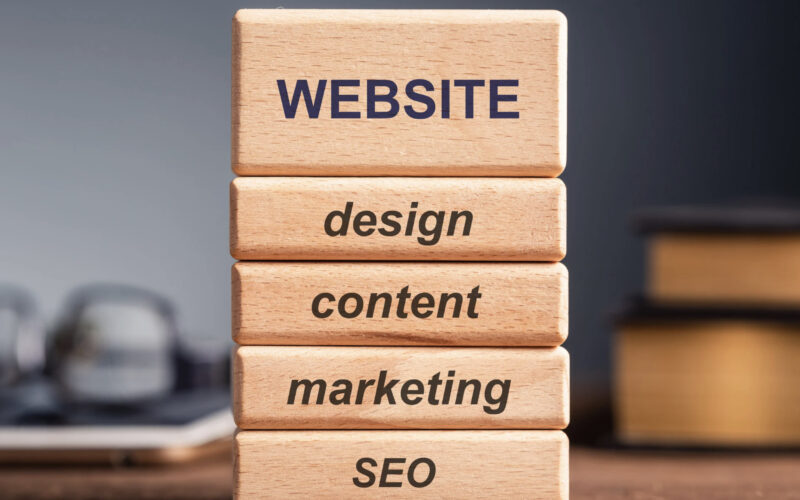If you are also tired of high bounce rates and poor sales. Maybe it’s time to focus on giving your website, online store a complete makeover.
A well-developed ecommerce site serves as the cornerstone of your digital strategy. It sets the stage for everything from brand perception to user engagement and ultimately, sales. And by the way, Statista claims that $1,620 is the expected average revenue per user in this industry. So there are ample growth opportunities for businesses.
In this blog post, we will dive deeper into these elements, providing you with a comprehensive guide to ecommerce website development. Whether you’re starting from scratch or looking to optimize your existing store, these insights will help you create a lasting online presence.
What is Ecommerce Development and Why is it important?
E-commerce website development involves creating and building online platforms that enable businesses to sell products or services.
This process includes designing user-friendly interfaces, integrating secure payment gateways, managing product catalogs, and implementing features to enhance the overall shopping experience for customers.
With online shopping becoming the norm, building an ecommerce website isn’t just a trend—it’s a golden opportunity to rake in conversions and revenue. But let’s dive deeper, shall we?
Setting the First Impression
Remember the old saying, “You never get a second chance to make a first impression”? Your website is often the first touchpoint a potential customer has with your brand.
On an average, 41-55% people leave your website after visiting just one page of your website. Therefore, setting a good impression is the key to a successful ecommerce development.
A well-crafted site, thanks to stellar web development, can create a strong initial impression that keeps visitors intrigued and engaged. It’s like a warm handshake that welcomes them to explore more.
Enhancing User Experience
Imagine walking into a store where everything is easy to find, the staff is helpful, and the checkout process is a breeze. That’s what excellent ecommerce development does for your online store. It ensures smooth navigation, helping users find their favorite products and complete their purchases without a hitch.
When your site is intuitive and efficient, you’re not just selling products—you’re selling a seamless shopping experience.
Discover how Codewave can help you build a seamless and engaging ecommerce platform that keeps customers coming back. Contact us today!
Boosting Your SEO Strategy
Now, let’s talk about SEO. If your website is not ranking on Google, no matter how amazing it looks or how it is structured, it won’t drive any sales.
15% of global sales take place on the internet which is a huge number. Therefore SEO is one of the most crucial aspects of developing an ecommerce website. A well-developed ecommerce website is always SEO friendly, and shows your store in front of global customers.
Page speed, coding standards, and URL structures are critical components for SEO. By getting these elements right, you climb higher on search results, drawing more organic traffic and staying ahead in the game.
Standing Out from the Competition
In a sea of online stores, how do you stand out? Simple: by having a top-notch website. Innovative ecommerce development allows you to craft a unique, high-quality site that not only looks good but functions flawlessly.
It’s your secret weapon to outshine competitors, attract more leads, and drive significant traffic to your business.
Important Elements for Your Ecommerce Website Development
Building a rock-solid ecommerce website is like setting the foundation for a high-rise: every element needs to be in place for it to stand tall and thrive.
Whether you’re starting from scratch or leveraging an ecommerce platform, there are some non-negotiable functions that can determine your success. Let’s dive into the essentials you shouldn’t overlook.
Good User Interface/Experience
Imagine walking into a store that’s cluttered and confusing—chances are, you’d walk right out. The same goes for your website. User interface (UI) and user experience (UX) design are the cornerstones of your online store’s success.
A clean, intuitive UI with a logical layout guides visitors effortlessly through the sales funnel. UX, on the other hand, ensures that every interaction feels natural and satisfying.
If your website’s design doesn’t hit the mark, you risk losing customers. A staggering 32% of online shoppers won’t return after a bad experience, and 59% will leave for good after multiple mishaps.
Make sure your ecommerce platform offers robust UI/UX options that entice visitors to fill their carts and check out with ease.
Positive Mobile Experience
With millions of purchases being made from mobile devices, a stellar mobile experience isn’t just nice to have—it’s essential. Mobile optimization ensures that your site performs seamlessly on smartphones and tablets.
Modern ecommerce platforms should automatically scale for mobile, but sometimes it pays to adopt a mobile-first approach. If your site is a breeze on desktop but a nightmare on mobile, you’re leaving money on the table. Prioritize mobile users to keep them engaged and shopping.
Security
In the digital age, security is paramount. Customers need to feel safe when they hand over their personal information. If your site has even a hint of a security issue, trust is shattered—and trust is tough to rebuild.
Your ecommerce platform must treat security as a top priority. When you handle sensitive data like names, addresses, and payment information, airtight security measures are non-negotiable.
Choose a platform that puts security front and center to protect your customers and your reputation.
SEO Capabilities
Search engine optimization (SEO) is the secret sauce that helps your site rank higher in search results. Good SEO starts with your ecommerce site’s design. Fast-loading pages, clean copy, and strategic keywords all contribute to better visibility on search engines.
SEO isn’t just a techy buzzword—it’s a critical part of your marketing strategy. Effective SEO practices bring organic traffic to your site, acting as a form of inbound marketing that drives sales and growth.
Payments & Checkout
The checkout process is where the magic happens, but it’s also where it can all go wrong. Payments and checkout should be seamless, intuitive, and hassle-free. Any friction here, and you risk losing the sale.
Ensure your ecommerce platform handles payments smoothly. The process should be clear, straightforward, and secure, guiding users effortlessly to complete their purchases. A smooth checkout experience can significantly reduce cart abandonment and boost your conversion rates.
Now that we are clear about what needs to be done on your online store, it is time to move to “how it should be done?”. Let’s get started with 6 essential steps to develop your ecommerce website.
6 Steps to Your Ecommerce Website Development
Building an ecommerce website might seem daunting, but with the right steps, you can create a powerful online store that attracts customers and drives sales.
Let’s break down the essential steps to get you from idea to launch with minimal fuss.
1. Understand Your Business Goals
Before diving into development, you need to have a crystal-clear vision of what you want to achieve.
Start with your “why.”
- Are you aiming to reach more customers, supplement your physical store, or expand from B2C to B2B?
- Define your specific goals and the metrics you’ll use to measure success.
- Consider weekly sales volume targets, customer lifetime value, and whether you plan to sell locally or internationally.
Knowing your objectives will guide every decision you make.
2. Understand the Intended Shopping Experience
What kind of experience do you want your customers to have? Think about features like product filters, side-by-side comparisons, and an optimized one-page checkout.
Do your customers want a quick and simple shopping experience, or do they prefer to browse and discover?
Tailor your site’s structure to match their needs and create a customer journey that feels intuitive and engaging.
3. Discuss Platform Options
You don’t need to start from scratch. There are numerous ecommerce platforms available, each with its own set of advantages. Popular options include BigCommerce, Magento, WooCommerce, and Shopify.
Evaluate which platform aligns best with your business needs and desired features. Consider integration capabilities if you’re already using a content management system like WordPress. Choose wisely to ensure your platform supports your growth.
4. Add Products
Adding products is more than just listing items. Focus on high-quality images that give customers confidence in what they’re buying. Provide detailed descriptions, especially for items that require careful consideration.
Ensure your inventory syncs across all sales channels to streamline operations and prevent overselling.
Make it easy for customers to find exactly what they’re looking for with clear, informative product listings.
5. Set Payment and Shipping Settings
Your ecommerce platform should support various payment gateways, allowing customers to choose their preferred method. Consider options like buy now, pay later, which are increasingly popular.
If you’re selling internationally, make sure your payment gateways support your target regions. Likewise, set up your shipping options to provide clear, reliable delivery choices that meet customer expectations.
6. QA and Launch Website
Before going live, give your site a thorough test-drive. Review calls-to-action, test the checkout process, and ensure payment integrations work smoothly. Check that all images are high-quality yet optimized for fast loading.
Verify product categories and descriptions, test links and forms, and ensure tax settings and inventory listings are accurate. Finally, make sure your site looks and functions well on both desktop and mobile devices.
Conclusion
Launching an ecommerce business is no small feat. Each step requires careful consideration and strategic planning.
Skilled developers like Codewave can transform your vision into a functional, attractive, and user-friendly website that stands out in a crowded digital marketplace.
They are the architects who bring your ecommerce dream to life, ensuring every detail is optimized for success.
In the end, your ecommerce success hinges on a blend of solid technical foundation and relentless dedication to your customers. Embrace the journey with enthusiasm, and you’ll build an online store that’s not just profitable, but a true reflection of your brand’s values and vision.
Let Codewave’s experienced developers bring your ecommerce vision to life. From platform selection to final launch, we’re here to help. Contact us now!
FAQs
Ecommerce web development is the process of building and designing an online store where consumers can purchase products or services. It involves creating a user-friendly interface, integrating secure payment gateways, managing product catalogs, and implementing features to enhance the shopping experience.
Mobile optimization ensures that your website performs well on smartphones and tablets, providing a seamless shopping experience for mobile users. With a significant portion of online purchases made via mobile devices, optimizing for mobile can lead to increased traffic, higher engagement, and more sales.
SEO helps improve your website’s visibility on search engines, driving organic traffic to your site. Effective SEO practices, such as optimizing page speed, using clean code, and incorporating strategic keywords, can enhance your search rankings and attract more potential customers.
Key elements include a good user interface (UI) and user experience (UX), mobile optimization, strong security measures, effective SEO capabilities, and a seamless payments and checkout process. Each of these components plays a vital role in ensuring a smooth and engaging shopping experience for customers.
Before launching, thoroughly test your website for design, performance, and navigation. Review calls-to-action, test the checkout process, verify payment integrations, optimize images for load speed, and ensure all links and forms are functional. Make sure your site displays well on both desktop and mobile devices to provide a consistent user experience.
Codewave is a design thinking led digital transformation company enabling organisations with playful innovation using AI & ML, IoT & Edge, AR, VR, Cloud, Blockchain, and Data.







